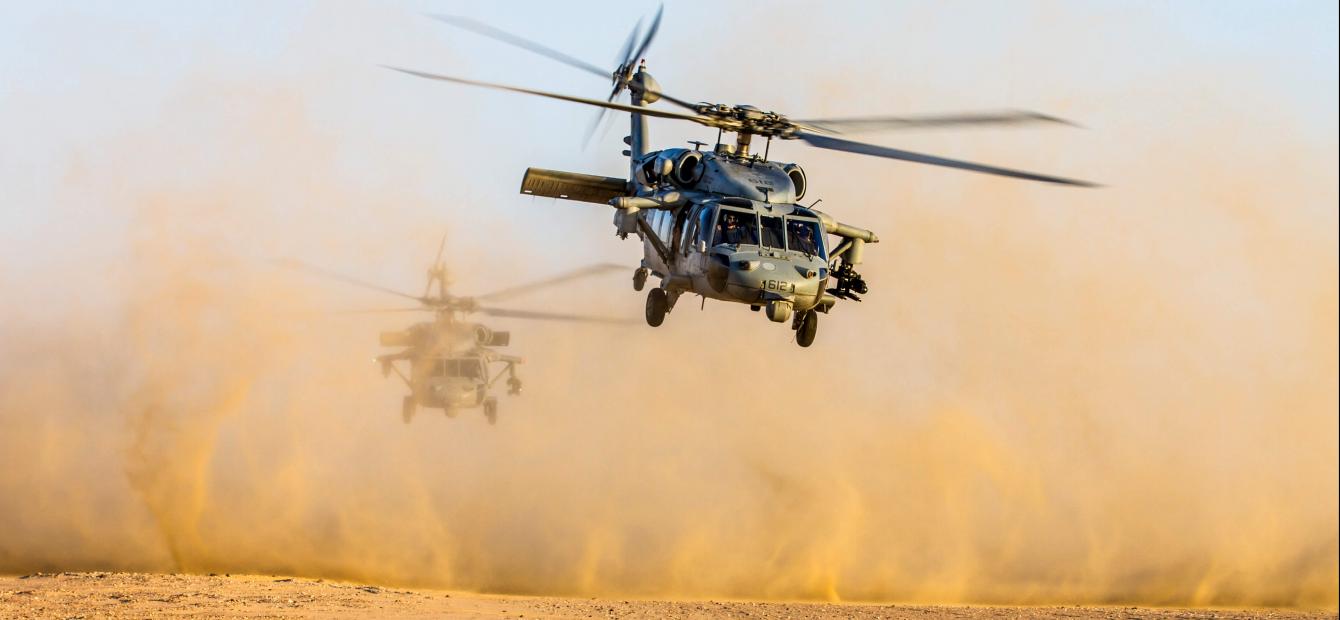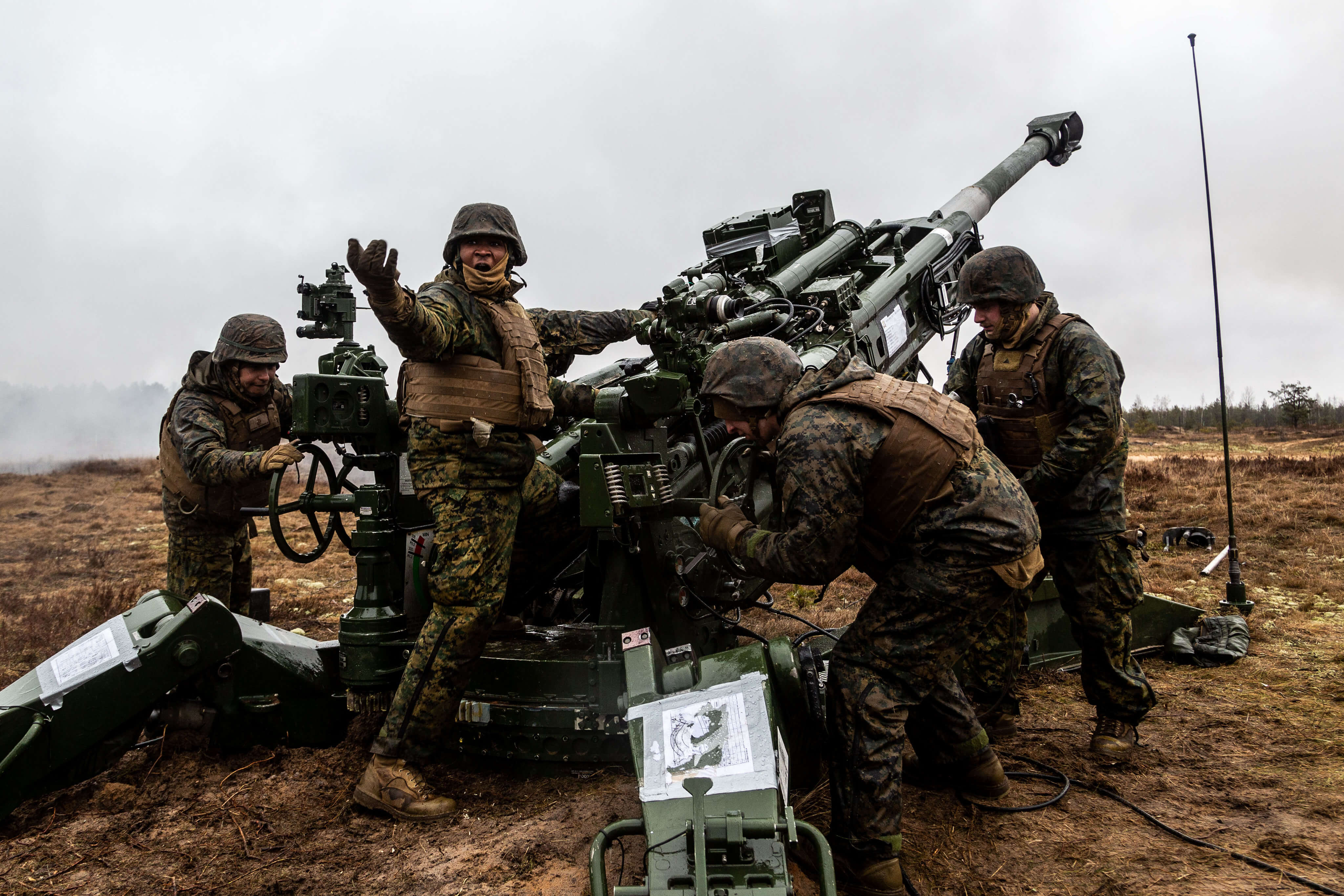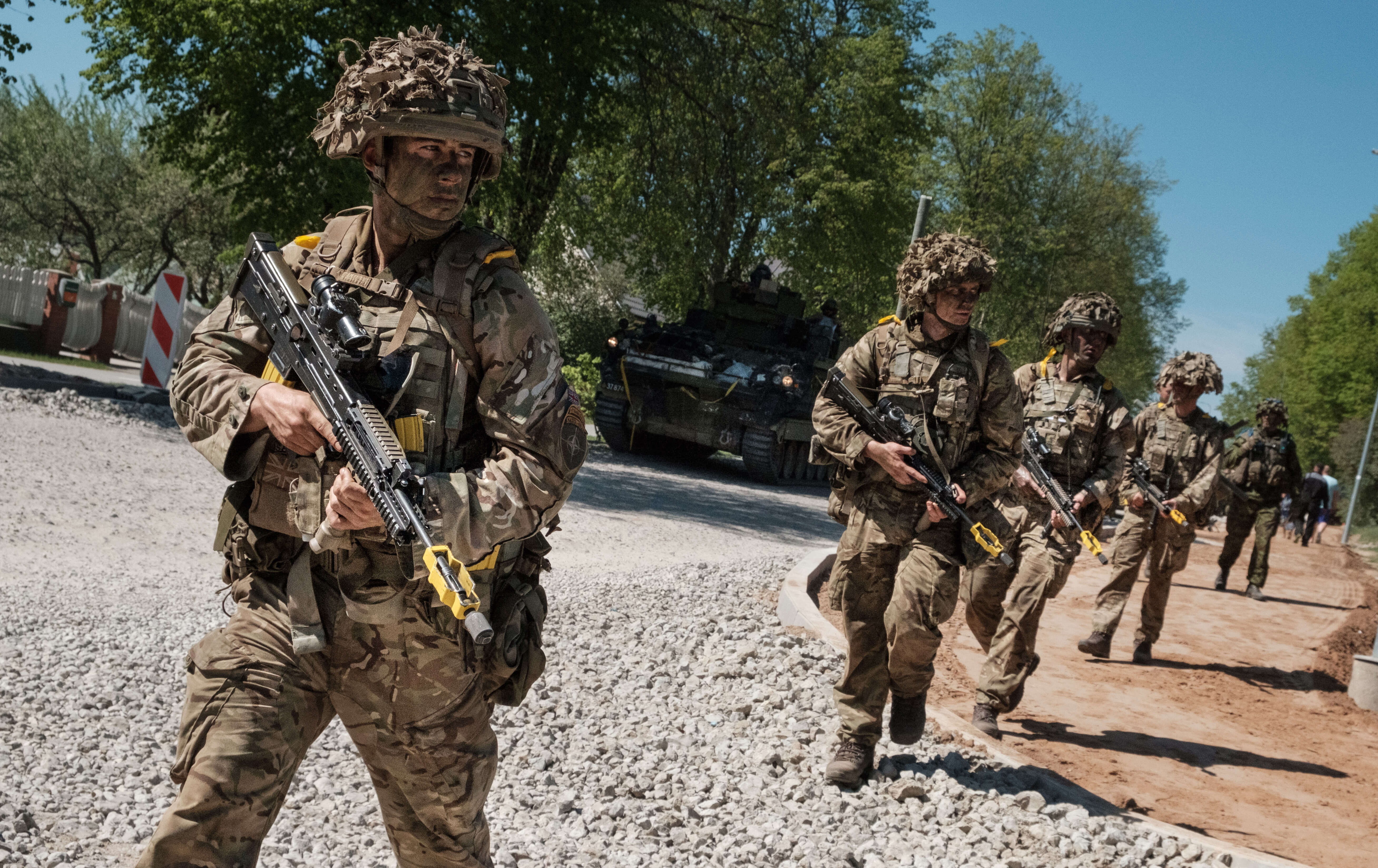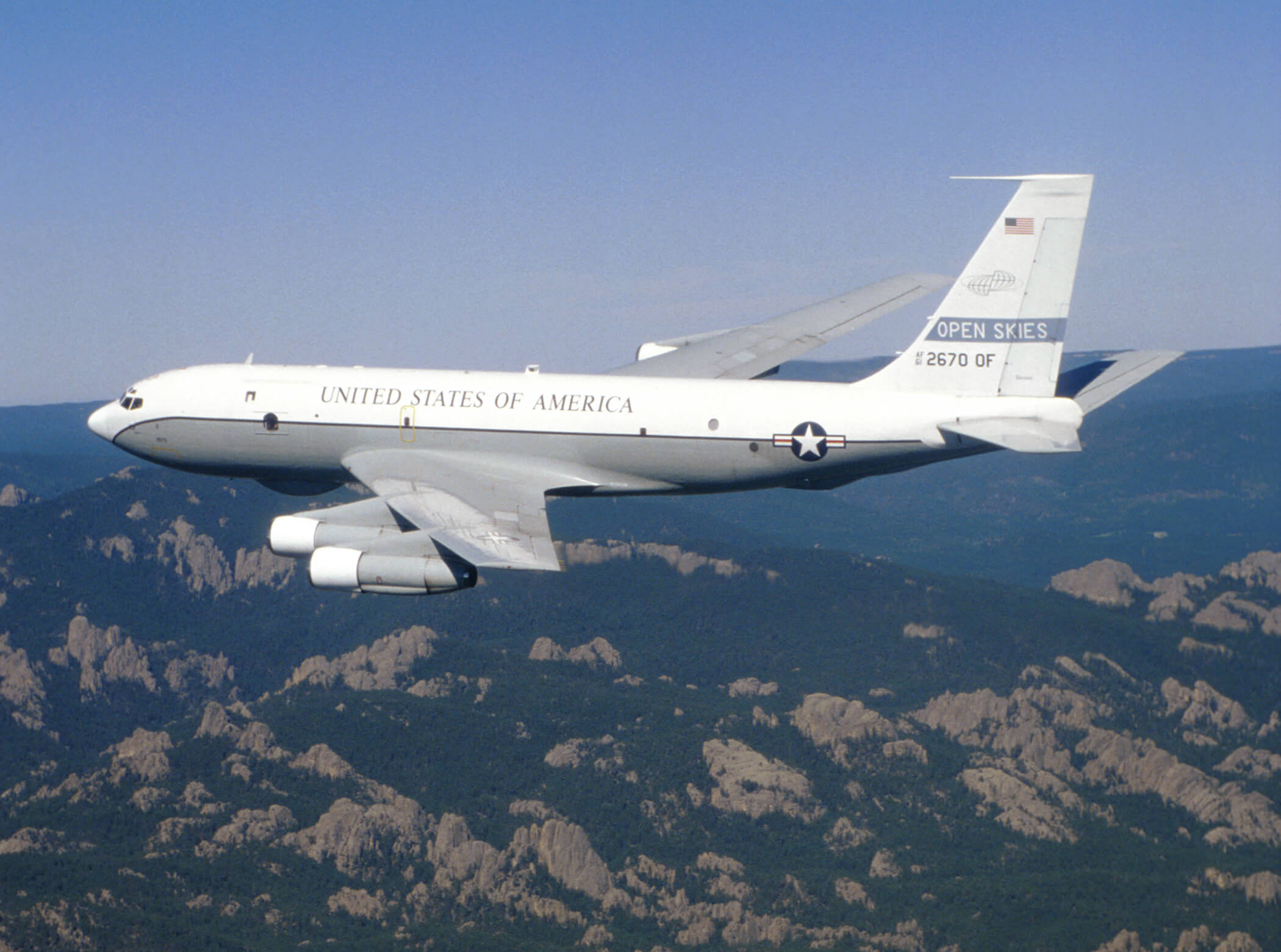
Are conventional arms control treaties all dead letters?
Arms control is often associated with weapons of mass destruction. Yet all current armed conflicts are fought with conventional weaponry. Third stop in this Clingendael Spectator series on arms control: are conventional arms control treaties all dead letters, or can Europe’s sleeping beauties be brought back to life?
When people think of arms control, most often arrangements concerning weapons of mass destruction come to mind. This focus of public attention is understandable given the dramatic consequences of the use of nuclear, chemical or biological weapons.
Still, we face a paradox here, because apart from the occasional employment of forbidden chemical devices, like recently in Syria, all armed conflicts are fought by means of conventional weaponry.
Whether you look at the battlefields of Yemen, Libya, Syria, Mali or eastern Ukraine: regular or irregular formations are exchanging conventional munitions, be they released from planes, helicopters, drones, ships, artillery or missile installations, tanks, armoured vehicles or hand-held (semi)automatic rifles.
Europe experiences increasing levels of armed conflict while there is less scrutiny through arms control arrangements
Taken together, the impact of these weapons may amount to mass destruction, but all these systems fall under the rubric of conventional arms. Therefore, it may be useful to have a look at arms control regimes that cover such weapons.1
These regimes are generally little known and, alas, either dysfunctional or limping, while for the time being new initiatives are being blocked. Is that a problem? Yes it is, because Europe experiences increasing levels of armed conflict while there is less scrutiny through arms control arrangements. There may be some perverse logic to this correlation, but we should always strive to improve ourselves.
Existing arrangements
The heyday of conventional arms control occurred immediately after the end of the Cold War when in November 1990 the twenty-two member states of two alliances, NATO and the Warsaw Pact, signed the Conventional Armed Forces in Europe (CFE) Treaty. That same year, the countries participating in the Conference on Security and Cooperation in Europe (CSCE) finalised the so-called Vienna Document, a compilation of politically binding Confidence and Security Building Measures that increase transparency of conventional forces.
Two treaties and one political agreement are considered the triad of conventional arms control in Europe and generated an unprecedented level of transparency
Finally, in 1992 twenty-seven countries signed the Open Skies Treaty that allows parties to conduct unarmed observation flights over each other’s territories to collect data on military forces and activities. These two treaties and one political agreement are generally considered the triad of conventional arms control in Europe and have generated a globally unprecedented level of regulation and transparency. Let’s have a closer look at these instruments, and see how they fared ever since.
The CFE Treaty2
This landmark treaty was concluded in a fairly short time, but only because during the Cold War much of the groundwork had already been laid.3
The CFE treaty, covering an area from the Atlantic to the Urals, places limits on five categories of equipment: tanks, armoured combat vehicles, heavy artillery, combat aircraft and attack helicopters – systems used for launching surprise attacks and initiating large-scale offensive actions.
At the time, a concurrent objective of these bloc-to-bloc ceilings was to undo the Warsaw Pact’s conventional superiority and establish a military balance.4 CFE led to a massive drawdown of forces and destruction programs of excessive weaponry, largely by the East.
The treaty’s inspection regime provided a unique degree of military transparency, as well as military contacts which contributed hugely to the CFE’s confidence-building character. For a long time, CFE has been considered ‘the cornerstone of European security’.

Soon enough, however, CFE was in need of adaptation. The demise of the Soviet Union in 1991 led to a distribution of treaty responsibilities among eight of the newly independent republics, while the earlier breakup of the Warsaw Pact challenged the treaty’s bloc-to-bloc approach.
Citing national security concerns in its restive North Caucasus Military District, Russia managed to mitigate some of its ‘flank zone’ restrictions in 1996. During that same Review Conference, parties to the treaty agreed that new post-Cold War realities should be taken into account and they embarked on a process toward an Adapted CFE, introducing national ceilings and firmly reiterating the concept of ‘host nation consent’: the advance permission by states for stationing foreign treaty-limited-equipment on their territories.
On the margins of the 1999 OSCE Summit in Istanbul5 parties signed this Adapted CFE, although only Russia, Ukraine, Belarus and Kazakhstan would eventually ratify this document. NATO allies refused to do so, arguing that Russia had not lived up to its commitments to withdraw troops and treaty limited assets from bases in Georgia and Moldova.6
The atmosphere around CFE would sour further with an increasing number of compliance issues, and because of other developments such as a second wave of NATO enlargement and the announcement by the US to deploy missile defence installations in Poland and the Czech Republic.
The CFE Treaty, with its Cold War-era thresholds and categories, is now virtually a dead letter
In November 2007 Russia adopted legislation to suspend its compliance with CFE (even though the treaty contains no such provision), including its verification and information exchange obligations. A few years later, Western parties to the treaty stopped the implementation of their own obligations with respect to Russia.
The latest blow dealt to CFE was Russia’s decision in March 2015 to withdraw from CFE’s diplomatic body, the Vienna-based Joint Consultative Group. Formally speaking, Russia is still a state party to the treaty but in name only. Despite several attempts to revamp discussions, this thirty-year-old document – with its Cold War era thresholds and categories – is now virtually a dead letter.
The Vienna Document7
Whereas CFE primarily governs the statics of military holdings (‘what do you have’), the Confidence and Security Building Measures or CSBMs in the Vienna Document focus rather on dynamics (‘how do you behave’).
Apart from sharing information about defence planning, military organisation and weapon and equipment systems, participating states are also required to inform each other when ‘certain military activities’ take place that involve numbers of troops and weapon systems beyond predetermined levels.
Likewise, states that are concerned about ‘significant’ military activities by others can ask for clarification, or put these concerns on the agenda of the OSCE’s Forum for Security Cooperation. The Vienna Document also provides for evaluation and inspection visits to check against submitted information. An important part of these CSBMs relate to observation of military exercises, which are especially pertinent when conducted in border areas.

The Vienna Document may be considered as a layer on top of CFE. With the gradual unravelling of this treaty and with the re-emergence of interstate armed conflict in Europe (between Russia and Georgia in 2008 and Russia and Ukraine as from 2014), it is no wonder that Western countries started to refocus on these ‘behavioural’ CSBMs.
The current edition of the Vienna Document, which is supposed to be revised every five years, dates from 2011. Especially the US is actively pursuing modernisation and has encouraged NATO allies to table proposals. Some of these concern lower thresholds for notification of large scale exercises, since Russia is believed to circumvent obligations by submitting downsized numbers or to escape prior notification by labelling exercises ‘short-notice combat readiness drills’.
The US’ proposals to revise the Vienna Document are rejected by Russia, which (rightly) claims that NATO previously showed no interest in Russian proposals to adapt the Document
For the time being, however, the Russian delegation in Vienna is not responding to these overtures, and has even withdrawn its own earlier proposals. It (rightly) claims that NATO countries were previously not interested in discussing Russian ideas to adapt the Document.
Russia also says that most (if not all) of allied members’ recent proposals seem to be directed against one particular participating state because of its behaviour vis-à-vis Ukraine – where Moscow, by its own account, is not involved.
Vienna Document activities are still being carried out, delivering at least a modicum of confidence and security, but in this framework too, compliance issues dominate the discussion and the stalling upgrade of CSBMs leads to an acrimonious atmosphere.
Open Skies8
The idea of reciprocal aerial reconnaissance flights was a concept originated by US president Eisenhower in the 1950s, but at the time the Soviets were not interested. During the late 1980s this idea was revived and led to the signing of Open Skies in 1992 (due to lengthy ratification procedures the treaty did not enter into force until 2002).
On the basis of active and passive quota – which are distributed annually – parties to the treaty send short-notice requests for overflights by unarmed, fixed-wing observation aircraft equipped with certified sensors and camera’s. After agreeing on a flight plan, visiting and host crews jointly conduct these flights and analyse collected data, which are made available to other treaty parties as well.

Open Skies is designed as a confidence-building instrument to increase transparency about military activities. Obviously, individual satellite capabilities will yield more precise information than the technically circumscribed Open Skies-equipment. But not all states possess high-end espionage tools to get an impression of other states’ militaries. Moreover, the point of these Open Skies observations is that they are an open and joint endeavour within an agreed format which, importantly, involves military interaction.
Open Skies functions relatively well, with thousands of flights having been carried out, but it has not been exempt from mounting compliance issues. Over the last years, the US and Russia have traded mutual accusations of restrictive measures that, it is claimed, contravene the treaty.
During 2018 no Open Skies-flights were conducted at all over a territorial dispute
For instance, Russia is blamed for limiting flight paths over its strategic exclave Kaliningrad for spurious reasons, while Russia hits back with allegations that the US has imposed barriers to observing Alaska and Hawaii. Even worse, during 2018 no Open Skies-flights were conducted at all over a territorial dispute.
Moscow maintained that flight routes over southern Russia shall not include a 10 km-zone from its borders with the Georgian breakaway regions of Abkhazia and South-Ossetia: “non state-parties to the treaty” as far as Russia – who has recognised their independence – is concerned. Georgia retaliated by refusing Russian observation aircraft over its territory.
Fortunately, in 2019 Open Skies operations did resume, but new clouds are gathering on the horizon with the recent announcement that Washington may pull out of Open Skies altogether. Some within the administration, as well as in Congress, maintain that the Russians are abusing the treaty to peek into critical US infrastructure, that the US gets nothing out of Open Skies itself and that the whole thing therefore represents a danger to national security.9
Structured Dialogue
Would it be possible to stem this tide of negative developments with regard to conventional arms control? Frankly speaking, it takes some courage to be even slightly optimistic at a time when – in the field of nuclear arms control – the INF agreement has just been abandoned and the prospects for extending New START look dim.
Conventional arms control, after all, cannot be seen in isolation and is a function of the political will and military necessity to invest in multilateral diplomacy and cooperative security, which are scarce commodities these days.
Still, when in 2016 Germany chaired the OSCE (which ‘owns’ the Vienna Document and hosts the CFE and Open Skies communities) it launched the so-called “Structured Dialogue” process. At the end of its presidency, Berlin suggested to “work towards creating an environment conducive to reinvigorating conventional arms control and CSBMs in Europe”.
This suggestion was ultimately adopted by participating states, although both the US and Russia added cautionary interpretative statements to this decision. Meanwhile, several meetings have taken place in the framework of this informal process.
Both broader political discussions on threat perceptions are organised and more detailed sessions with military representatives. They discuss data on force composition and postures that are routinely exchanged among OSCE countries but seldom actually analysed.
Although Europe’s ongoing conflicts keep marring the atmosphere and consensus is nowhere in sight, dialogue serves a purpose in anticipation of better times ahead
Of course, these are difficult meetings with a lot of apprehension around the table and the usual tit-for-tat recriminations. However, this format brings military representatives together that otherwise would hardly see each other. Although Europe’s ongoing conflicts in Azerbaijan, Moldova, Georgia and Ukraine keep marring the atmosphere and consensus is nowhere in sight, these talks do serve a purpose in anticipation of better times ahead.
It is important to realise that the underlying issues causing a stand-off in security cooperation are, on the one hand, the profound Russian dislike of how Europe’s security architecture evolved during the post-Cold War period. In this regard, the enlargement of NATO toward Russia’s borders remains the principal bone of contention.
On the other hand, Western countries are extremely dismayed by Russia’s heavy-handed behaviour, including its military incursions into neighbouring countries and brazen annexation of territory.
Arms control can ultimately contribute to imminent détente, but until that day arrives it is a political and diplomatic imperative to keep the conversation going
Unless and until these issues are resolved or at least mitigated, conventional arms control – or any other form of arms control – is not going to save the day. Arms control can ultimately contribute to imminent détente or help to cement international agreement, but until that day arrives it is a political and diplomatic imperative to keep the conversation going and to garner better understanding.
This conversation is complicated, also because of growing divisions within our own Western ranks, but important. After all these decades, existing agreements have anyhow become stale and we need to update numbers, thresholds and mechanisms. We also need to look at new weapons and delivery means that have emerged and are not yet captured in regulatory frameworks. Indeed, an uphill but worthy task.
- 1In this article I will limit myself to three OSCE-related European arrangements, although conventional arms control in a wider sense includes a range of other formal and informal mechanisms as well (e.g. the Ottawa Treaty on Anti-Personnel Mines, the Arms Trade Treaty, the Wassenaar Arrangement on transfers of conventional arms and dual-use goods and technologies, the Missile Technology Control Regime etc.).
- 2See: The CFE Treaty (pdf)
- 3During the 1970s and 80s, NATO and Warsaw Pact members had been discussing force reductions (the so-called Mutual and Balanced Force Reduction talks in Vienna), a process that paralleled the political negotiations between East and West in the framework of the CSCE that would result in the 1975 Helsinki Final Act. Lack of trust and a waning sense of détente caused the MBFR talks to fail, but the threads were picked up in 1989 under better circumstances.
- 4Another consideration for European NATO members was that lower numbers would encourage the US to remain militarily involved.
- 5The December 1994 CSCE Summit had agreed to change the name to Organization for Security and Cooperation in Europe (OSCE).
- 6
This concerned bases in Gudauta and Vaziani, which according to a joint statement by Russia and Georgia were to be “disbanded and withdrawn” by July 2001. The Istanbul Summit Declaration welcomed the commitment by Russia “to complete withdrawal of the Russian forces from the territory of Moldova by the end of 2002”, referring to Russia’s military presence in the breakaway region of Transnistria.
Russia claimed that these political commitments and the treaty were separate issues, and was particularly annoyed by the fact that non-ratification by NATO meant that the adapted treaty would not enter into force and, therefore, the alliance’s newly acceded Baltic members would constitute a grey area on Russia’s doorstep.
- 7See: The Vienna Document, 2011 (pdf)
- 8See: Treaty on Open Skies
- 9Democratic lawmakers have raised alarm over this intention. See for example the US Senate Committee on Foreign Relations, ‘Top national security Democrats warn Trump admin against U.S. withdrawal from key Euro-Atlantic security treaty.’





1 Reacties
Load comments
Arms Control
Geachte heer Klijn, mijn complimenten voor uw interessante artikel. Van 1990 tot 1998 ben ik als vertegenwoordiger van de Koninklijke Luchtmacht namens Nederland betrokken geweest bij de implementatie van wapenbeheersingsakkoorden zoals de INF-, CSE-, Chemische Wapens en Open Skies-verdragen en het Weense Document van de CVSE/OVSE. Van 1998 tot 2003 werkte ik als military attaché bij de Nederlandse ambassade in Moskou. Over mijn ervaringen geef ik nog geregeld lezingen en gastcolleges op universiteiten en hogescholen. U kunt begrijpen dat uw artikel mijn grote belangstelling heeft.
Reactie toevoegen